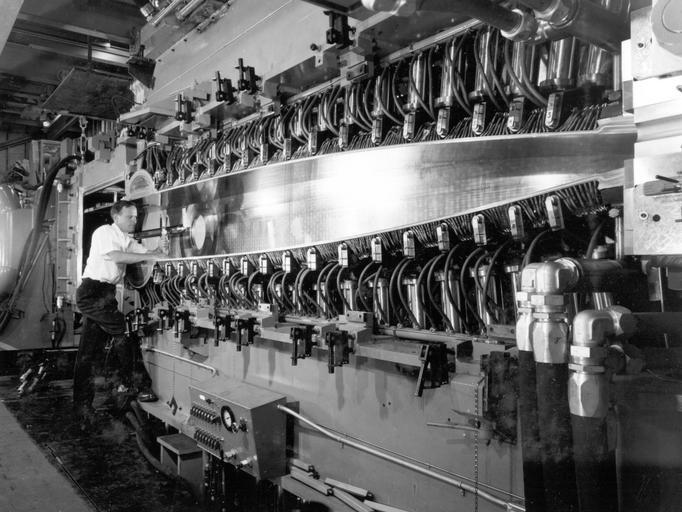MAKE A MEME
View Large Image

| View Original: | JPL's_Hypersonic_Wind_Tunnel.jpg (1349x1012) | |||
| Download: | Original | Medium | Small | Thumb |
| Courtesy of: | www.flickr.com | More Like This | ||
| Keywords: hypersonic wind tunnel hypersonicwindtunnel jet propulsion laboratory jetpropulsionlaboratory p-1299a p1299a blackandwhite monochrome black and white In September of 1959, JPL held a press conference to celebrate the opening of its new $3,500,000 hypersonic wind tunnel, the third wind tunnel built at JPL from 1947 to 1959. A JPL engineer is shown positioning a scale model of a missile in the tunnel's 21 x 21 inch test section. The two horizontal stainless steel plates were flexible and could be moved by a system of hydraulic jacks seen above and below, to change the speed of the airflow and other variables. Testing time was to be used equally by Army Ordnance contractors, Air Force contractors, and the JPL Aerodynamic Research Section. This NASA wind tunnel is especially noteworthy, as JPL has mostly concentrated on astronautical research as opposed to aeronautical. This is a unique wind tunnel in that not only is it at JPL, but as Donald Baals and William Corliss state in Wind Tunnels of NASA (NASA SP-440), "the hypersonic facility was a particularly significant addition to the existing NACA spectrum of tunnels. Covering the range from Mach 4 to Mach 11, with continuous-flow capability, it operated at pressures up to 715 psi and temperatures to 1350? F." In September of 1959, JPL held a press conference to celebrate the opening of its new $3,500,000 hypersonic wind tunnel, the third wind tunnel built at JPL from 1947 to 1959. A JPL engineer is shown positioning a scale model of a missile in the tunnel's 21 x 21 inch test section. The two horizontal stainless steel plates were flexible and could be moved by a system of hydraulic jacks seen above and below, to change the speed of the airflow and other variables. Testing time was to be used equally by Army Ordnance contractors, Air Force contractors, and the JPL Aerodynamic Research Section. This NASA wind tunnel is especially noteworthy, as JPL has mostly concentrated on astronautical research as opposed to aeronautical. This is a unique wind tunnel in that not only is it at JPL, but as Donald Baals and William Corliss state in Wind Tunnels of NASA (NASA SP-440), "the hypersonic facility was a particularly significant addition to the existing NACA spectrum of tunnels. Covering the range from Mach 4 to Mach 11, with continuous-flow capability, it operated at pressures up to 715 psi and temperatures to 1350? F." | ||||